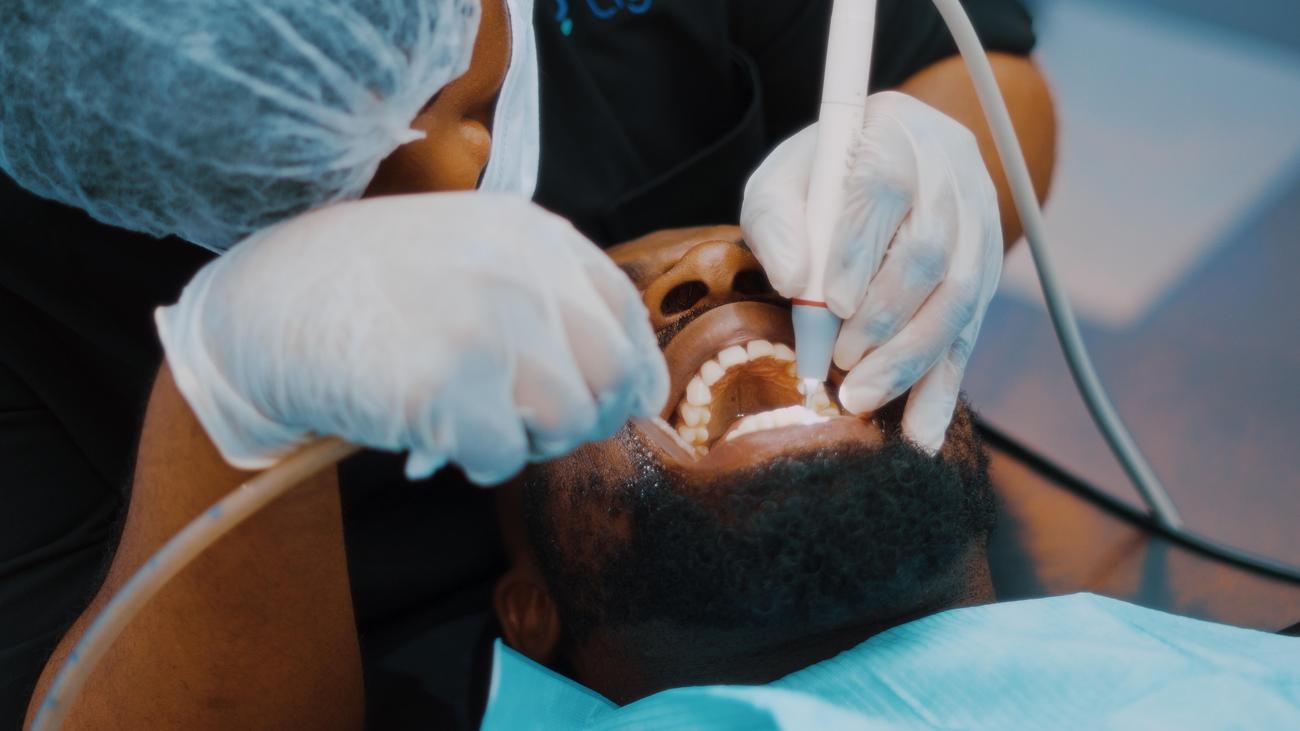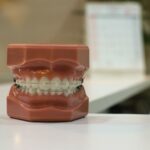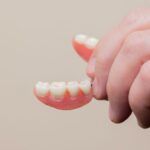Welcome to the fascinating world of braces! In this article, we invite you to discover entertaining fun facts about braces that will not only enlighten you but also leave you amazed. From the surprising fact that braces have been around for nearly 300 years to the intriguing truth that all orthodontists are dentists, we will explore the intriguing history and lesser-known aspects of orthodontic treatment. Whether you’re considering braces or simply curious about this field of dentistry, join us as we unravel the captivating journey of braces and debunk common myths along the way. So sit back, relax, and get ready to embark on an educational adventure as we delve into the exciting world of braces!

Fun Facts About Braces
Did you know that braces have a rich history dating back almost 300 years? In 1728, the brilliant French physician Pierre Fauchard invented braces as we know them today. Since then, they have become an essential tool in orthodontics, helping millions of people achieve beautiful and healthy smiles. So, let’s embark on a fascinating journey through entertaining fun facts about braces!
Braces and Space: A Surprising Connection
You might never have guessed this, but the wire used in braces actually has a connection to NASA! Back in the 1960s, NASA scientists were seeking a reliable material for their missions. As luck would have it, they discovered a type of wire that was perfect for braces – one that would exert gentle pressure on the teeth to guide them into proper alignment. So, the next time you see someone with braces, you can thank NASA for their contribution to orthodontics!
Beyond Straightening: Fixing the Bite
When we think of braces, we often associate them with straightening teeth. However, braces serve another crucial purpose – fixing a person’s bite. A bite refers to how the upper and lower teeth come together when you close your mouth. If the bite is misaligned, it can result in various issues like jaw pain, difficulty biting or chewing, and even speech problems. That’s why orthodontists use braces to correct these bite irregularities, helping patients achieve not only straight teeth but also a properly functioning bite.
Ancient Egypt: Pioneers of Straight Teeth
The desire for straight teeth is not a recent phenomenon. It actually dates back thousands of years to the ancient Egyptians. They were among the first civilizations to recognize the importance of dental aesthetics. Archaeological findings have revealed mummies with metal bands wrapped around their teeth in an early form of braces. So, the pursuit of a perfect smile is nothing new – ancient Egyptians paved the way for our modern orthodontic treatments!
A Variety of Braces: More Choices Than You Might Think
When it comes to braces, there are not just one or two options, but over ten different types! Traditional metal braces, with their stainless steel brackets and wires, are the most well-known. However, there are also ceramic braces that blend in with the natural tooth color for a less noticeable appearance. Lingual braces are placed on the inner surface of the teeth, making them virtually invisible. And for those seeking a more discreet solution, clear aligners like Invisalign offer a removable and transparent orthodontic treatment. With so many choices available, orthodontists can find the perfect fit for every patient’s needs and preferences.
Unique and Special: Braces in Numbers
Have you ever wondered just how common it is to have braces? Well, statistics show that approximately one in four million people currently wear braces. That means every time you walk down the street, you’re likely to pass several individuals who are undergoing orthodontic treatment. So, if you’re currently wearing braces, remember that you’re part of a unique and special group with a shared goal – achieving a confident smile!
The Orthodontic Connection: Dentists and Orthodontists
When you think of braces, you might only consider orthodontists. However, did you know that your orthodontist is also a dentist? Orthodontics is actually a specialized field within dentistry that focuses on the alignment and positioning of teeth. Orthodontists undergo years of additional training after dental school to become experts in braces and other corrective treatments. They work closely with general dentists to ensure that your overall oral health is in top shape while you’re undergoing orthodontic treatment. So, rest assured that your orthodontist is not just straightening your teeth but also taking care of your entire smile!
In conclusion, braces have come a long way since their invention by Pierre Fauchard in 1728. From their unexpected connection to NASA to their ancient roots in Egypt, braces offer a wealth of fun facts to discover. With a variety of options available and the expertise of orthodontists, achieving a straight smile and a properly functioning bite is within reach. So, the next time you see someone with braces, remember the fascinating journey that led to their creation and the positive impact they can have on oral health.
Fun facts about braces: Did you know that flossing with braces can be a bit tricky? Well, worry not because we have the ultimate guide on how to floss with braces. Learn the best techniques and tips to keep your teeth and braces sparkling clean. how to floss with braces
But before you dive into flossing, have you ever wondered how long it takes to put on braces? We have all the answers you need. From the initial consultation to the actual placement, discover the step-by-step process and find out how long does it take to put on braces.
Now, here’s something sweet for all the candy lovers out there. Have you ever wondered what candy you can eat with braces? Don’t worry, you don’t have to give up on your favorite treats. Check out our comprehensive list of braces-friendly candies and satisfy your sweet tooth without any worries. what candy can you eat with braces.
So, whether you’re curious about flossing techniques, eager to know the time it takes to put on braces, or craving some braces-friendly candies, click on the links and uncover a world of information about braces.
Fact #1 – Braces Are Nearly 300 Years Old
Braces, those fascinating devices that help us achieve straighter and healthier smiles, have a long and intriguing history. Believe it or not, braces have been around for almost 300 years! Can you imagine what early braces looked like back then? Let’s dive into the captivating story of how braces came to be.
It all started in 1728 when a visionary French physician named Pierre Fauchard invented the first braces. Known as the father of modern dentistry, Fauchard revolutionized orthodontics by introducing a simple device that consisted of a flat strip of metal connected to the teeth using thread. This early version of braces was a significant step towards correcting dental misalignment.
Over the years, braces have come a long way in terms of design, materials, and effectiveness. Today, we have a plethora of options to choose from, including traditional metal braces, ceramic braces, lingual braces, and clear aligners like Invisalign. But it’s fascinating to realize that the foundation of this orthodontic marvel can be traced back to Fauchard’s ingenious creation nearly three centuries ago.
“From Fauchard’s innovative strip of metal to the modern braces we have today, the history of braces is filled with remarkable advancements that have transformed orthodontics.”
Nowadays, braces not only aim to straighten teeth but also fix a wearer’s bite. A correct bite is vital for proper chewing, speaking, and overall oral health. So, it’s not just about aesthetics; braces offer functional benefits too. This comprehensive approach to orthodontic treatment is a testament to how far we’ve come since Fauchard’s revolutionary invention.
But braces wouldn’t be what they are today without the contribution of another surprising field: space exploration. In 1959, NASA developed a remarkable metal alloy called nickel-titanium. This superelastic and shape-memory alloy revolutionized orthodontics once again. The development of nickel-titanium wires enabled orthodontists to apply constant, gentle force to move teeth into their desired positions. Who would have thought that NASA’s ingenuity would have such an impact on our smiles?
“Thanks to NASA’s innovative nickel-titanium wires, orthodontists can achieve better results with more comfort and efficiency.”
Let’s take a moment to appreciate the fact that braces, in some form, have been around for centuries. As early as 3,000 years ago, there were attempts to correct crowded teeth, as evidenced by the oldest written record of orthodontic treatment. These ancient efforts to improve dental alignment might have been quite different from the braces we know today, but they demonstrate humanity’s enduring pursuit of straight smiles.
“The roots of our desire for straight teeth can be traced back to Ancient Egypt, where orthodontic appliances made from animal intestines were used to move teeth.”
To bring it all together, it’s important to remember that orthodontists are specialized dentists who undergo additional training to become experts in braces and other corrective treatments. Their expertise allows them to recommend the most suitable type of braces based on individual circumstances. Each case is unique, and the choice of braces can vary from person to person. So, if you’re considering orthodontic treatment, it’s essential to consult with an orthodontist who can guide you towards the best option for your specific needs.
“Every orthodontist is also a dentist, but not every dentist is an orthodontist. When it comes to braces, trust the experts who specialize in creating beautiful smiles.”
As we’ve discovered, braces are more than just a dental invention. They are a testament to human ingenuity, innovation, and the pursuit of excellence in oral health. From Fauchard’s humble strip of metal to the space-age wonders of nickel-titanium wires, braces have come a long way. So, the next time you admire someone’s beautiful smile, remember that braces played a significant role in achieving it. Braces truly symbolize the incredible journey of creating confident and healthy smiles throughout history and continue to do so today.
“Braces are not only a solution for dental misalignment but also a fascinating testament to human progress, paving the way for bright smiles and improved oral health.”
Fact #6 – All Orthodontists are Dentists
As an experienced dental professional, I have come across various interesting facts about braces that I’m excited to share with you. Today, let’s dive into a fascinating fact: All orthodontists are dentists.
You may be wondering, what sets orthodontists apart from other dental professionals? Well, orthodontists are dentists who undergo additional specialized training to become experts in braces and other corrective treatments. This means that every orthodontist has a dental background and possesses the necessary knowledge and skills to provide comprehensive dental care. So, if you’re considering orthodontic treatment, rest assured that you’ll be in the hands of a well-trained dental expert.
But why is it important to highlight this fact? Understanding that orthodontists are dentists helps to reinforce the credibility and trustworthiness of the profession. It showcases the expertise and experience that orthodontists bring to the table, setting them apart from general dentists when it comes to the field of orthodontics. Now, you might be wondering, how common are orthodontists? Well, let me tell you, only about 5% of dentists go on to become orthodontists, making them quite a specialized group within the dental community.
To put it simply, orthodontists are the superheroes of the dental world. They possess the unique powers to help align and straighten teeth, correct misalignments, and create beautiful smiles. Their training as dentists allows them to grasp the intricacies of oral health, while their specialized knowledge in orthodontics equips them with the skills to transform smiles effectively and safely. Imagine your orthodontist as a dental superhero, using their powers to save the day and give you the smile you’ve always dreamed of.
“To put it simply, orthodontists are the superheroes of the dental world.”
Now that we’ve established the importance of orthodontists in the field of braces, let’s take a moment to appreciate the wonders of orthodontic treatment itself. Braces have come a long way in terms of design, materials, and effectiveness over the past 300 years. It’s truly incredible to think that braces have been around for so long, with ancient Egyptian orthodontic devices dating back even further.
“You might be surprised to learn that braces have been around for hundreds of years, and they continue to evolve and improve.”
While braces have a rich history, the materials used in modern-day braces have some interesting origins as well. Did you know that the alloy currently used to make braces was actually developed by NASA? That’s right! The same material that helps propel astronauts into space is now the backbone of sturdy, reliable braces. This innovation has revolutionized orthodontics, allowing orthodontists to apply constant, gentle force to move teeth and achieve optimal results.
“Braces owe their strength and durability to an alloy developed by NASA, proving that even space exploration contributes to our oral health!”
One misconception that we need to address is the concern about age limits for braces. The truth is, braces are not restricted to a specific age range. Whether you’re a child, a teenager, or an adult, it’s never too late to straighten your teeth and enhance your smile. The flexibility of braces allows for effective treatment regardless of age, and orthodontists are well-equipped to cater to the unique needs of each patient, regardless of their stage in life.
“The beauty of braces is that they are suitable for everyone, regardless of age. It’s never too late to achieve the smile you’ve always wanted!”
In summary, remember that all orthodontists are dentists who undergo specialized training to become experts in braces and other corrective treatments. Their valuable expertise, combined with the latest advancements in orthodontic technology, ensures that you receive the highest quality care for your oral health needs. So, if you’re considering orthodontic treatment, take comfort in knowing that you’re in the capable hands of a dental superhero who is ready to transform your smile.
“Together, orthodontists and braces have the power to create beautiful smiles and boost confidence. So, let’s embrace the superhero status of orthodontists and enjoy the journey towards a healthier smile!”
With this knowledge in mind, you are now equipped with another entertaining fact about braces. Stay tuned for more fun and informative facts as we continue our exploration of the fascinating world of orthodontics!
“Remember, all orthodontists are dentists, but not all dentists are orthodontists. It takes specialized training to become a dental superhero in the world of braces!”
In today’s video, we will be discussing what to expect when getting braces and highlighting the five things you should know before getting them. If you have any additional advice, please share it in the comments section. Before we dive into these five things, I want to emphasize the importance of community and how everyone helps each other out in the comments section.
[youtube v=”4Pgm7y0P7aE”]
The Day You Get Your Braces On: Many people wonder if getting braces hurts, and the answer is no. However, there is a slightly uncomfortable aspect to it. Cheek retractors are used to stretch out your cheeks and ensure that your teeth stay dry during the process. To avoid any discomfort caused by dry lips, it is recommended to use chapstick before getting your braces on. While getting your braces put on, you may even find the experience painless enough to fall asleep.
Adjusting to Braces: After getting your braces, you may feel a strange sensation when trying to wrap your lips around your teeth. This is because your lips are not used to having braces. It may take a few days or up to a week for you to get used to this feeling. Additionally, the braces can sometimes get caught on your cheeks and lips, leading to sores. To alleviate this, it is recommended to have wax or topical numbing gels on hand. Applying wax to any hooks or wires can prevent them from irritating your mouth.
Dental Discomfort: When you first start your braces journey, your teeth may feel tender or bruised for a few days. This is due to the braces causing inflammation around the tooth’s root as part of the movement process. Taking a Tylenol before your visit can help alleviate this discomfort. As you progress, each adjustment becomes easier, and the discomfort subsides.
Hygiene: Proper hygiene is crucial during your braces journey due to the increased hardware in your mouth. Food can easily accumulate, leading to plaque, bacteria, cavities, and gum disease. It is recommended to use an electric toothbrush with oscillating rotating technology, a water pick, stannous fluoride toothpaste, a fluoridated alcohol-free mouthwash, and Platypus flossers to ensure thorough cleaning.
Foods to Avoid: Throughout your braces journey, there will be certain foods you should refrain from eating. Sticky, hard, crunchy, and chewy foods can potentially damage braces, increase the risk of cavities, and extend the overall treatment timeframe. Examples of such foods include apples, sticky taffy, hard chips, and certain candies. Following your orthodontist’s instructions regarding diet and maintaining good oral hygiene will ensure a smooth braces experience and prevent any unnecessary complications.
Remember, this section covers only a few key points, and there is more information available on the channel. Educate yourself as much as possible to become a well-informed patient. If you found this video helpful, please like and subscribe. Feel free to share any additional information in the comments section to help others on their braces journey.

FAQ
Q: How long have braces been around?
A: Braces have been around for nearly 300 years, with the first braces created in 1728 by French physician Pierre Fauchard.
Q: Are all orthodontists also dentists?
A: Yes, all orthodontists are trained dentists. However, only approximately 5% of dentists also specialize in orthodontics.
Q: Who invented braces?
A: Braces were invented by French physician Pierre Fauchard in 1728, who is considered the father of modern dentistry.
Q: What is the significance of braces in ancient history?
A: The desire for straight teeth can be traced back to ancient Egypt, where orthodontic devices were used to correct crowded teeth over 3,000 years ago.
Q: What are the main types of braces available?
A: There are over ten different types of braces available, including traditional metal braces, ceramic braces, lingual braces, and Invisalign aligners.
- First Lady Book: A History of Power and Influence - April 2, 2025
- Uncover James Albert King: A Legacy Revealed - April 2, 2025
- Georgia Platform: A Southern Strategy, 1850s - March 31, 2025
















